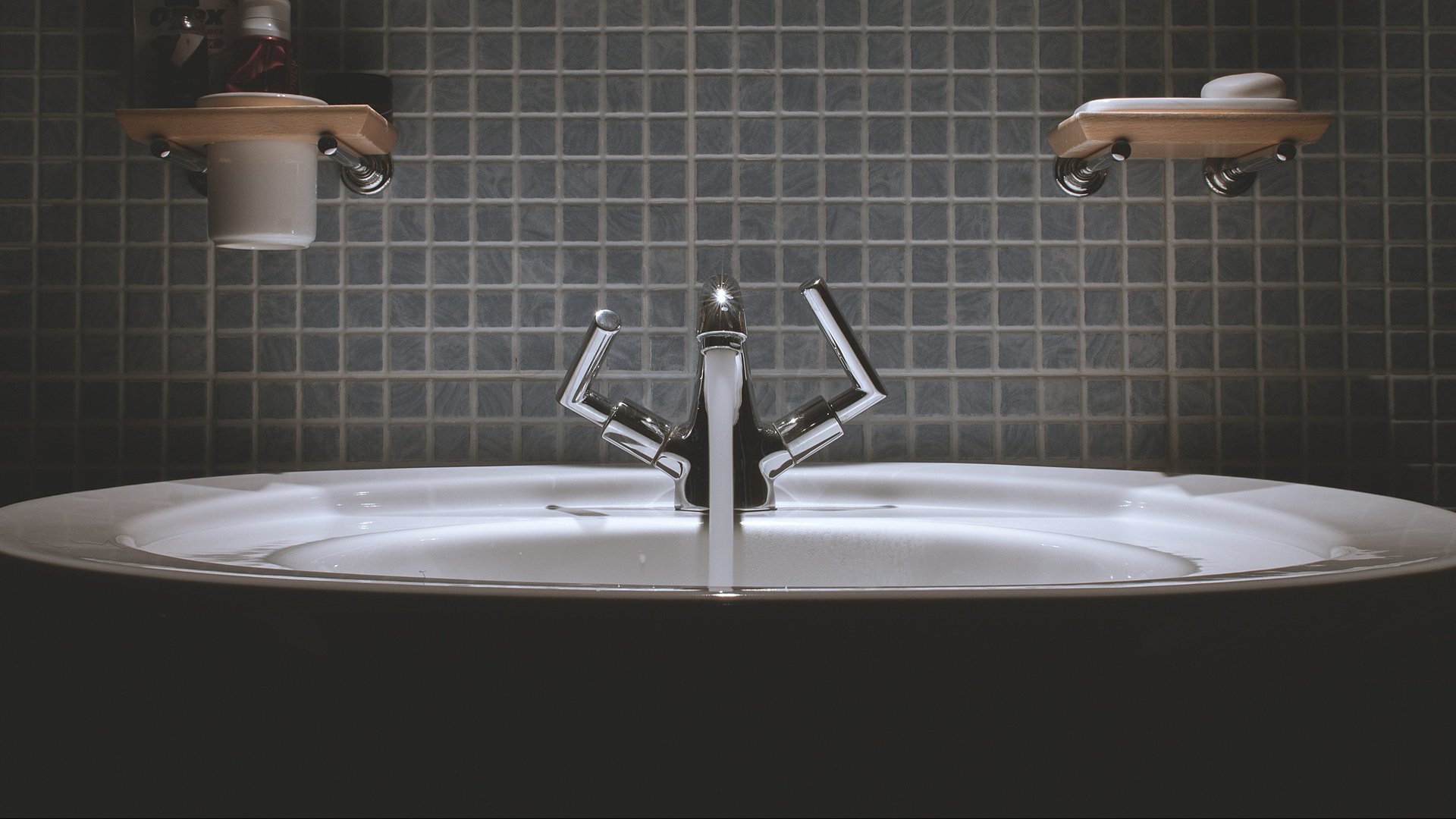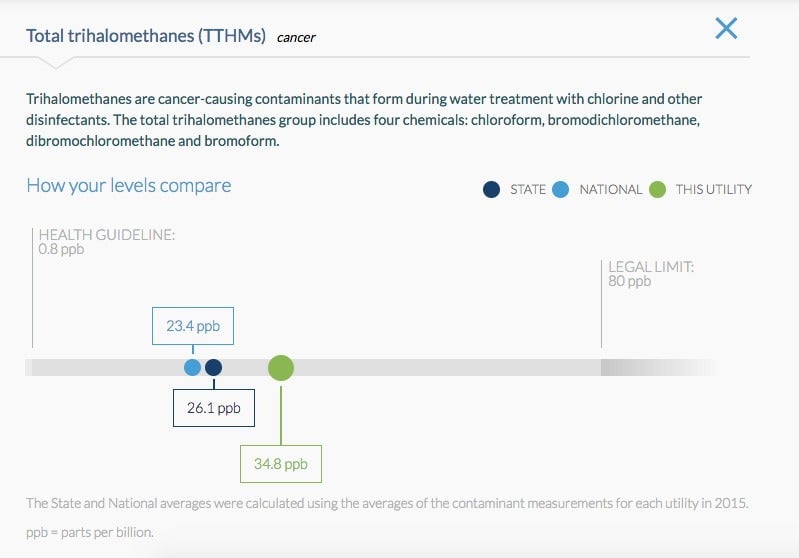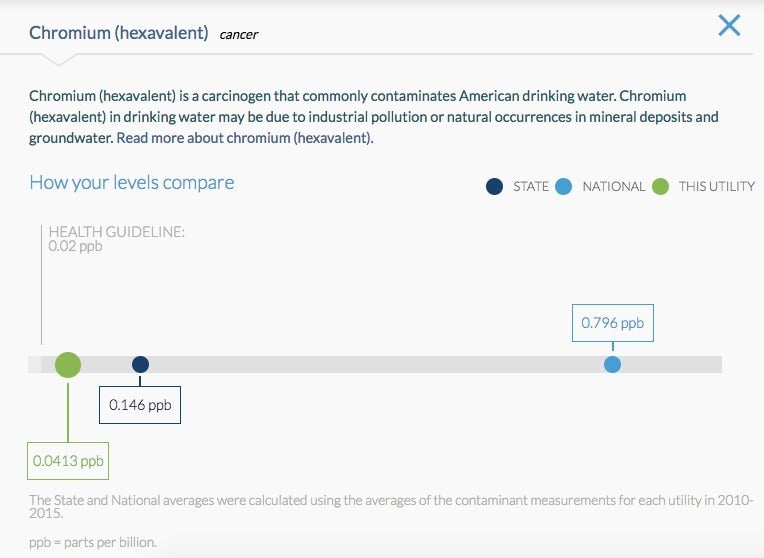In the US, most people are drinking water that is legally “safe” but isn’t actually risk-free
When it comes to drinking tap water in the US, “legal” does not necessarily mean safe.


When it comes to drinking tap water in the US, “legal” does not necessarily mean safe.
An analysis of 28 million water records from nearly 50,000 American water utilities published as a searchable database Wednesday (July 26) found dozens of contaminants in tap water at levels that get a passing grade from the government, but that toxicology research says pose a risk to human health.
For hundreds of other contaminants, the government doesn’t impose requirements at all. Rather, states and the federal government issue health guidelines, which function as unenforceable suggestions or goals. These are recommended levels, at which the risk is deemed acceptable, not necessarily absent. (For any cancer-causing contaminant, however, the federal guideline is “zero.”)
Tens of thousands of water utilities are contaminated at levels that exceed these too, according to the database. The utilities it includes cover the water supply of roughly 280 million people in the US.
The database is searchable by zip code, and was compiled using data that’s all technically publicly available, though not in any form the average American might find useful to read. “We’re attempting to fill a huge gap here,” says Sonya Lunder, a senior analyst at Environmental Working Group (EWG), the advocacy organization that compiled the database. Every zip code turns up some form of contamination. “I have not yet found any that have zero contaminants,” Lunder said.
Notably missing from the database are water systems on tribal lands, data on water systems that serve less than 10,000 people, and homes served by wells, because the US Environmental Protection Agency doesn’t require they be tested for contaminants like the larger systems.
I live in New York City; I entered my zip code and found that average levels of trihalomethanes—the harmful byproducts of water chlorination linked to an increased risk of bladder cancer—in my tap water are more than 40 times above the guideline set by California as a draft public health goal (for many comparisons, the EWG database uses California’s guidelines, because according to Lunder they use more modern scientific health research than many federal guidelines). That was still far below the federal government’s legal limit.

In my zip code, levels of hexavalent chromium, also referred to as chromium-6 and known to cause cancer (pdf), are at double the rate deemed safe by California’s guidelines (no legal limit exists).

At the recommended level of hexavalent chromium, there is, according to the California water authority, a risk of “no more than one” additional case of cancer out of every million people in New York City. If the city’s water contains double that level, that goes up to two unnecessary cases of cancer per million people. “That may not seem earth shattering,” Lunder says, but notes that plenty of groups are susceptible to the risks of toxins at lower levels than the general population; children and people who take medication that changes the chemistry of their stomach acid may be disproportionately affected.
Lead is a particularly stark example of federal standards and health science not matching up: The US EPA requires that 90% of household samples in any area must have lead levels of lower than 15 parts per billion (pbb). But research from the agency itself states clearly on its website that there is no known level of lead that is safe for children.
“About 0.2 parts per billion of lead is enough to make a kid lose one IQ point. The EPA’s own estimate is that when a bottle fed baby is fed with more than 3.8 ppb, they are at risk of elevated blood levels,” Lunder says. When the concentration of lead in a child’s blood rises beyond a certain point, they are at risk of serious health damage. The database shows that 19,000 water systems across the country had lead at levels considered harmful to children.
An earlier investigation from Reuters found 3,000 areas (census tracts and zip codes) in the US with lead poisoning rates that were at least twice as high as those in Flint, Michigan as it grappled with its public health emergency—and more than 1,100 of them had a rate at least four times higher.
Besides lead contamination, the Environmental Working Group says it found:
- 40,000 water systems (81% of the total) with contaminants linked to cancer.
- Hexavalent chromium in 71% of water systems serving a total of 250 million people across all 50 US states.
- Nitrate, a chemical from agricultural fertilizers, was present in more than 1,800 water systems serving a total of 7 million people in 2015 at levels above what the National Cancer Institute considers increases cancer risk.
- 1,4-Dioxane, also a carcinogen, in water systems serving 8.5 million people in 27 states at concentrations higher than what the US EPA considers poses a minimal risk.
The analysis also includes a buying guide for water filters—in many cases, Lunder said, the right charcoal filter is enough to significantly reduce exposure to contaminants.